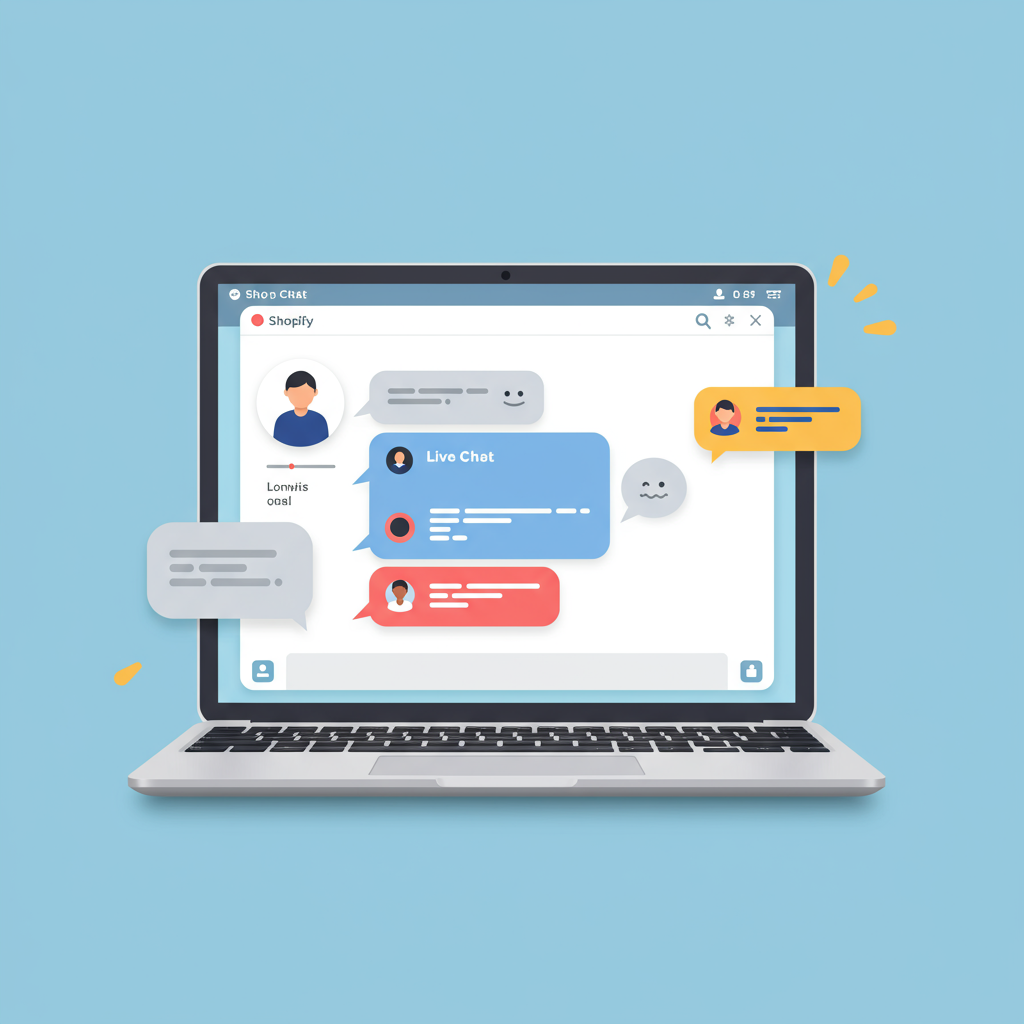Transforming Customer Engagement and Boosting Sales with Real-Time Assistance
Hey there, fellow Shopify merchants! I’m here to talk about something that has genuinely transformed how I connect with my customers: live chat support.
It’s no secret that customer service is paramount in e-commerce. In today’s fast-paced world, customers expect instant gratification, and traditional email support often falls short.
That’s where live chat steps in. It allows you to engage with your visitors in real-time, answering their questions, guiding them through their purchase journey, and resolving issues on the spot.
From my own experience, implementing live chat has significantly boosted my customer satisfaction scores and, more importantly, my conversion rates. It’s like having a virtual sales assistant available 24/7.
So, if you’re wondering how to bring this powerful tool to your Shopify store, you’ve come to the right place. I’m going to walk you through the entire process, step by step.
First, let’s quickly touch upon why live chat is a non-negotiable asset for your Shopify store. Think about it: a customer is browsing, they have a quick question about a product’s size or material.
If they have to send an email and wait hours for a reply, they might just abandon their cart and go to a competitor. Live chat eliminates that friction.
It builds trust. When customers know they can get immediate help, they feel more confident in their purchase decision. This directly translates to fewer abandoned carts and more completed sales.
Beyond sales, live chat is an incredible tool for gathering feedback. You’re directly interacting with your audience, learning about their pain points and what they love about your products.
Now, how do we actually set this up on Shopify? The good news is, it’s surprisingly straightforward, especially thanks to the robust Shopify App Store.
While you could technically try to code a custom solution, for most merchants, leveraging a dedicated live chat app is the most efficient and feature-rich approach.
There are many excellent options available, such as Tidio, LiveChat, Gorgias, and Chatra, just to name a few. Each offers a slightly different set of features and pricing plans.
My recommendation is to start by browsing the Shopify App Store. Search for “live chat” and read the reviews. Look for apps that offer a free trial so you can test them out before committing.
Consider what features are most important to you: Do you need chatbots? Integrations with your CRM? Mobile app for agents? Offline messaging capabilities?
Once you’ve chosen an app – for this guide, let’s assume you’ve picked one from the App Store – the installation process is remarkably simple.
Navigate to the app’s page in the Shopify App Store and click the “Add app” button. Shopify will then prompt you to grant the app necessary permissions to integrate with your store.
After approving the permissions, you’ll typically be redirected to the app’s dashboard or setup wizard. This is where the magic begins.
The first step is usually to create an account with the live chat provider. This involves setting up your email, password, and basic company information.
Next, you’ll want to customize the appearance of your chat widget. Most apps allow you to change the color scheme to match your brand, adjust its position on your website (bottom right, bottom left), and even upload your logo.
Don’t forget to set up your welcome message! This is the first thing customers will see. Make it friendly and inviting, something like, “Hi there! How can I help you today?”
You’ll also want to configure your operating hours. What happens when you’re not available? Most apps allow you to display an offline message or a contact form so customers can still leave a message.
If you have a team, you’ll need to add your agents. This usually involves inviting them via email and assigning them roles or permissions within the chat app’s dashboard.
Before going live, always test your chat widget! Open your store in an incognito window and initiate a chat yourself. Make sure it appears correctly and that messages are being received by your agent dashboard.
Now that it’s set up, let’s talk about best practices. Speed is key. Aim to respond to chat messages within seconds, not minutes. Customers using live chat expect immediate assistance.
Train your agents to be professional, empathetic, and knowledgeable about your products. A well-trained agent can turn a hesitant browser into a loyal customer.
Utilize canned responses for frequently asked questions. This saves time and ensures consistent messaging. Most chat apps have a feature for this.
Consider proactive chat. This is where the chat widget automatically pops up after a certain time or when a customer visits a specific page, offering assistance. Use it wisely to avoid being intrusive.
Finally, regularly review your chat transcripts and analytics. What are common questions? What issues are customers facing? This data is invaluable for improving your products, website, and overall customer experience.
Setting up live chat on your Shopify store is a relatively simple process that yields significant returns. It’s an investment in better customer relationships and, ultimately, in your store’s growth.
I truly believe it’s one of the most impactful additions you can make to your e-commerce strategy. What do you think about this article? I’d love to hear your thoughts on how live chat has impacted your business, or if you’re planning to implement it!
So go ahead, explore the options, pick an app, and start connecting with your customers in a whole new way. You’ll be glad you did!






